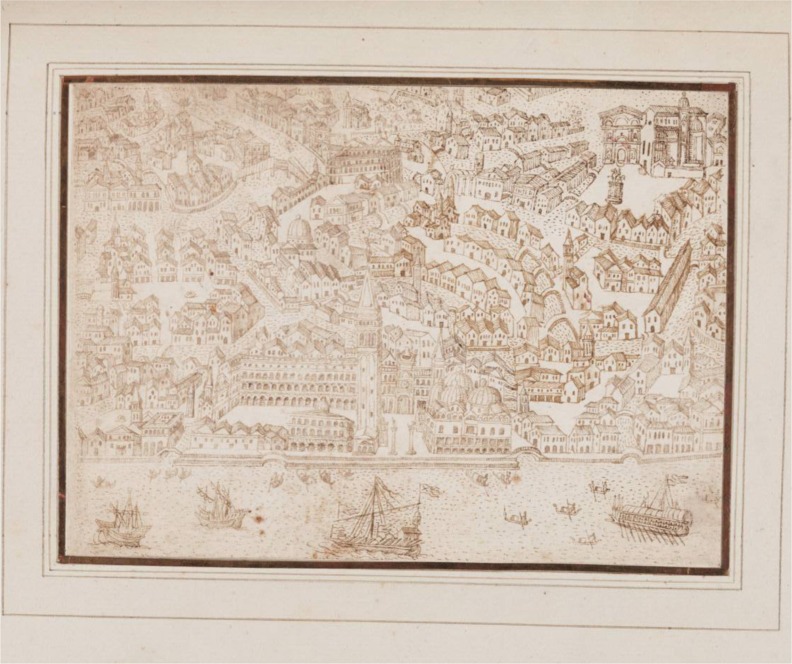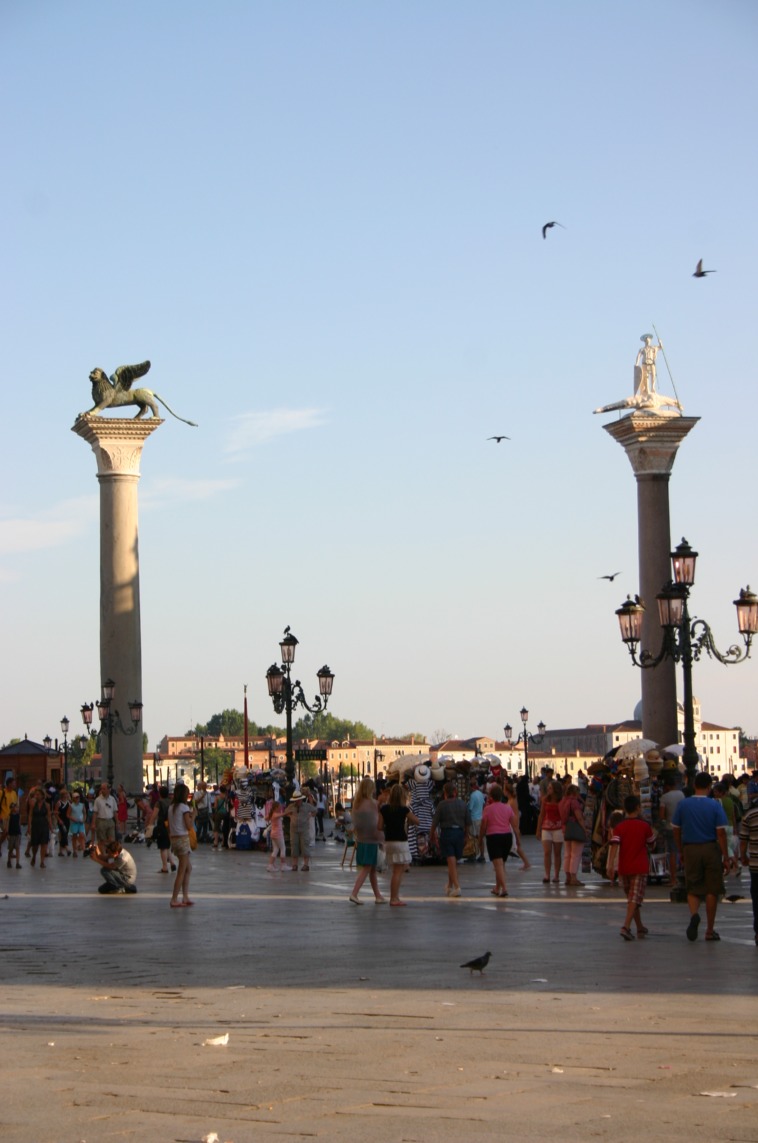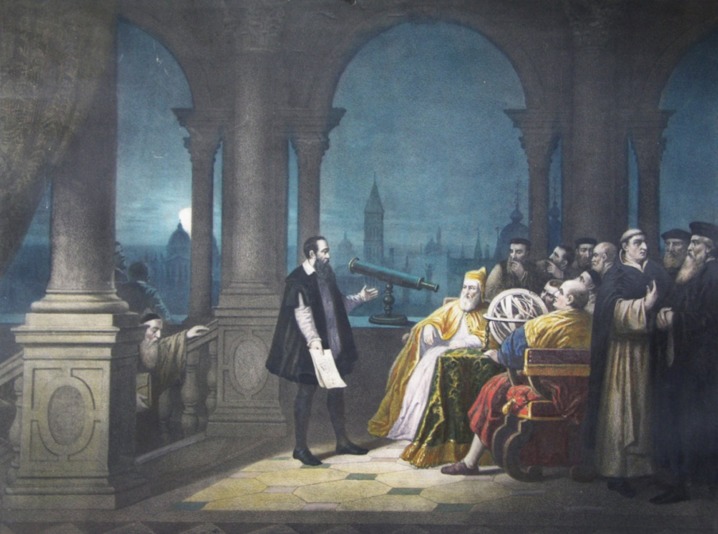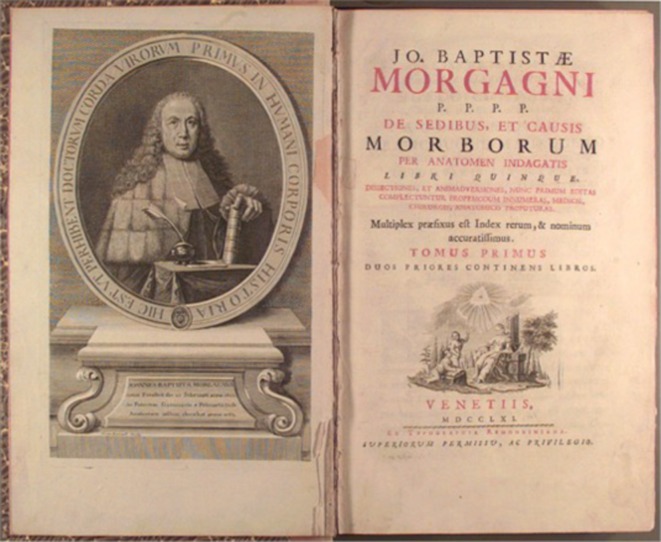Introduction
The University of Padua Medical School played a fundamental role in the history of medicine. Padua is a very old town, probably one of the oldest in North Italy. Traditional legend tells that the Trojan prince Antenore founded Padua in 1183 BC. At the beginning of the Roman Empire, Padua was an important town, both for its strategic position as an ultimate defence point against barbarian populations of North Europe and for its famous horse breeding, which made it the main supplier of horses to the Roman army. In the late Middle Ages, even before the rule of Venice, Padua was a prosperous city state adhering to the values of tolerance, civilization and democracy. During that era, Padua was particularly famous for its school of civil and religious law, which was the cornerstone for the upcoming university.
The University of Padua is one of the oldest universities in the world. It was founded in 1222 when a large number of scholars and professors left the University of Bologna to look for more academic freedom. As the city of Padua was long recognized for its cultural richness and liberal schools, the University was established spontaneously, not by “ex privilegio”, which was a special decree of the emperor or the Pope needed to build a new university at that time. 1 For centuries, many influential physicians and scientists contributed in the development of modern medicine in this institution. In addition to its impact on the history of modern medicine, the University of Padua hosted many eminent figures in all fields of science and humanities, such as Pietro d'Abano (physician and philosopher), Francesco Petrarca (poet), Pietro Bembo (poet and linguist), Giacomo Casanova (humanist), Prospero Alpino (botanist and voyager), Pietro Arduino (botanist), Nicolaus Copernicus (astronomer and physician), Elena Cornaro Piscopia (philosopher and the first woman to have a doctorate degree in the western world) and Galileo Galilei (mathematician and astronomer).
The Influence of the Republic of Venice
Venice was originally created on a group of 118 small islands in the lagoon in the 6th century by populations of the countryside escaping from the barbarian invasions of these times (Figs. 1, 2). This unique town became economically prosperous from the Middle Ages to the 18th century, mainly due to trades with Byzantine, Muslim and Asiatic populations. Other than its status as a maritime authority, Venice also expanded in the Italian mainland; at its full expansion, it dominated a great part of northeast Italy, the Dalmatian coast from Istria to Albania, the Greek Peloponnese, Crete and Cyprus. Its rule has been on average well accepted by the dominated populations, because Venetian administrators left adequate independency to local authorities and favoured economical prosperity to the ruled states.
Figure 1. .
A plan of Venice from late 16th century.
Figure 2. .
A plan of Venice from the Civitates orbis terrarum (1572–1617).
The most famous symbol of Venice is the Lion of St. Mark (Fig. 3). The statue of the bronze lion was placed on the top of one of two columns in Piazza San Marco in 1172 or 1184 (Fig. 4). The statue probably originally comes from the Middle East and dates to the late classic period or/and to the beginning of Hellenism (4th–3rd century B.C.). There is an interesting story behind why a maritime city like Venice takes a lion as its mascot. According to an old Venetian legend, St. Mark had got lost after being shipwrecked at the Venetian Lagoon and found rest by the Venetian shores. An angel, in the form of a winged lion, appeared to the apostle and foretold him that one day he would repose and would be adored in those lands: “Pax tibi Marce, evangelista meus. Hic requiescet corpus tuum”, which means: “Peace to you, Mark the Evangelist. Here rests your body”. In 828, relics, believed to be the body of St. Mark, were stolen from Alexandria, Egypt, by two Venetian merchants and were taken to Venice. The renowned St Mark's Basilica was built there to house these relics and the Lion of St. Mark has since become the symbol of the city. 2
Figure 3. .
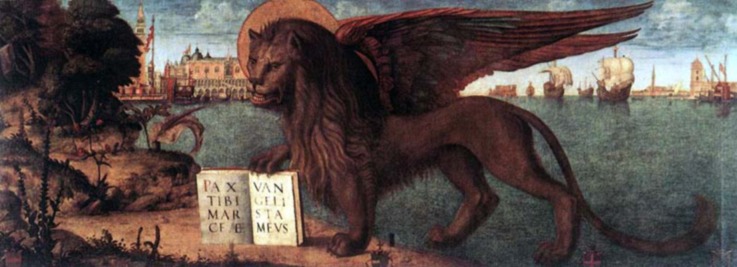
The Lion of St Mark by Ettore Carpaccio (1516).
Figure 4. .
The two columns in St Mark's Square holding the Lion of St Mark (left) and St. Theodore (right). Picture by Giovanni Dall'Orto, August 6, 2007 (Image courtesy of Wikimedia Commons).
In 1404, Padua fell under the rule of the Republic of Venice. Venetian administrators decided to improve the quality of the University of Padua. Already famous and prosperous, Venice politicians rendered the University of Padua as the principal centre of teaching and research of the Republic, while continuing to guarantee the freedom of thought as the typical characteristic of this institution. Since that time, research in the University incremented substantially. Venice brought the best professors of the time and it guaranteed them great freedom of research and teaching, so to justify the motto “Universa universis patavina libertas”, the freedom of Padua is universal and for everyone. The administrators of the University, also called the Riformatori, were delegated by the Great Council of Venice to rule the University and to secure freedom and tolerance for students and professors, who came from all the Europe. Leonardo Donato (or Donà) (1536–1612), who later became a famous Doge of Venice, was one of these Riformatori. Donato contributed to the call of Galileo to Padua, permitted the construction of the anatomical theatre under the teaching of Fabrici D'Acquapendente, and defended the autonomy of Venetian Republic. Interestingly, Donato became Doge of Venice when Galileo started to use the telescope to investigate the moon, the Milky Way, Venus and Jupiter (Fig. 5).
Figure 5. .
Galileo (standing) demonstrating his telescope to Leonardo Donati wearing yellow cloak (from a 19th century painting). Note in the background the famous St Mark's basilica and its belltower (campanile).
There is another important historical fact that best exemplifies the tolerance of Padua. After the Catholic Reformation, the University of Padua remained the only university under the Catholic reign still open to Protestants students and professors. In fact, it became the favourite academic destination for north Europe students, who were largely protestants. In the Hall of Forty of the Bo Palace, which exhibits 40 of the most renowned foreign students, more than the half of the portraits are of physicians from north European protestant countries such as England, Poland and Germany. One portrait was of Olof Rudbeck (1630–1702), a Swedish physician who founded an anatomical theatre in his hometown Uppsala on the model of that in Padua (Fig. 6). Of note, some claim that Rudbeck was the first to describe the lymphatic system.
Figure 6. .
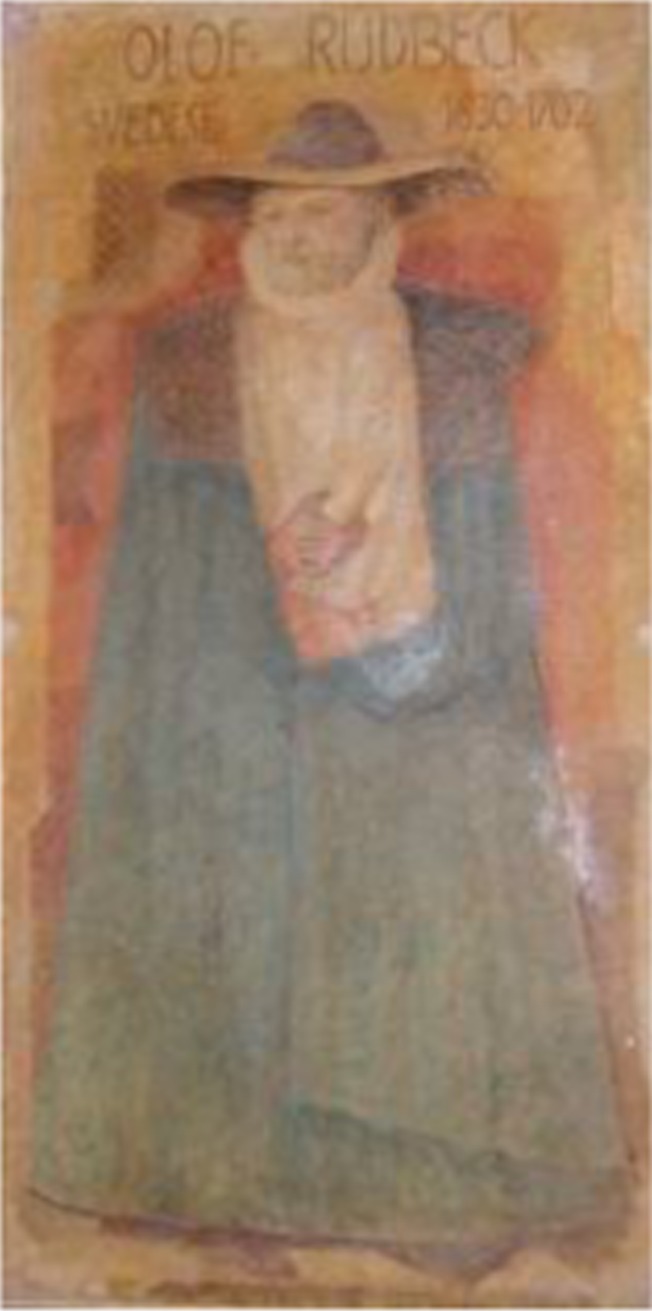
Painting depicting Olof Rudbeck in the “Hall of Forty” at Bo Palace.
The structure of University of Padua Medical School at the Renaissance
The golden age of Padua Medical School started with the Renaissance, a cultural movement between the 14th and the 17th centuries that profoundly influenced Europe and was characterized by the rediscovery of classic Greek and Roman texts and philosophy. At that time, the school was structured in five chairs: theoretical medicine, practical medicine, anatomy and surgery, botany and semeiotic. Each chair had Ordinary and Extraordinary positions. The Extraordinary position was given to teachers who had some experience in teaching, whereas the Ordinary position was given to teachers who were at the Extraordinary level for at least three years. 3 Interestingly, both Ordinary and Extraordinary chairs had two teachers: one in Primo and the other in Secundo loco, both giving their lectures in the same day and time but in different halls. In this manner, the administrators of the University could observe which lecture was more attended by students in order to determine the quality of the teaching. The professor in Primo loco was older and when he retired, the younger professor moved from Secundo to Primo loco, establishing by that a sort of promotion. The Extraordinary chair had also a third position reserved to professors born in Padua and Venice, because Padua and Venetian citizens and patricians could not teach in the university in normal circumstances. Venetian administrators decided this rule to avoid the abuse of chairs by private interests and nepotism.
Theoretical medicine was dedicated to the teaching of disease causes, symptoms and therapeutics, and was based on the texts of Avicenna (Ibn Sina), Galen and Hippocrates. Practical medicine was taught with analysis of clinical cases taken from the classic literature, in particular Avicenna and Razhes (ElRazy). 3 Anatomy and surgery were based on human and animal dissections in the anatomical theatre. Botany was under the name Ad Lecturam and Ad Ostensionem simplicium, and was related to Padua's Botanic Garden. The Botanic Garden of Padua was the first botanic garden in the world, founded in 1545, and is now part of UNESCO world heritage. Semeiotic, named De pulsibus et urinis, was established by the late 16th century. It was practiced in the town hospital, where students studied signs and symptoms of diseases in living patients. 4,5
Advances in anatomy
During the Renaissance, the most significant contributions of Padua were related to the study of anatomy, which is still recognised as the base of all medical disciplines. Modern anatomy and anatomical illustration were brought into existence by the work of Andreas Vesalius (1514–1564), a Belgian scholar and teacher of anatomy and surgery at the University of Padua. He produced two seminal texts; Tabulae anatomicae sex in 1538 and the De humani corporis fabrica in 1543. Vesalius' faith in direct observation of the natural world was based on Aristotle's philosophy, which was the scientific methodology of Padua. In the De humani corporis fabrica masterpiece, Vesalius founded modern anatomy and liberated this discipline from the traditional teachings of Galen. 6,7 Vesalius proved that the human anatomy according to Galen that ancient and medieval medicine followed, was not actually based on the study of man. Given that the dissection of human body was culturally inacceptable in Galen's times of ancient Roman Empire, Vesalius demonstrated that Galen used to study the anatomy of different animals, particularly apes:
“Indeed, those who are now dedicated to the ancient study of medicine […] are beginning to learn to their satisfaction how little and how feebly men have laboured in the field of Anatomy to this day from the times of Galen, who, although easily chief of the master, nevertheless did not dissect the human body; and the fact is now evident that he described (not to say imposed upon us) the fabric of the ape's body, although the latter differs from the former in many respects” (Vesalius 1543, p. 12). 7
Moreover, the anatomical works of Vesalius were magnificently illustrated, probably by Jan Stephan van Calcar (1499–1546), a scholar of Titian (Fig. 7). These illustrations, bridging the gap between art and science, became the reference model for all following anatomical depictions.
Figure 7. .
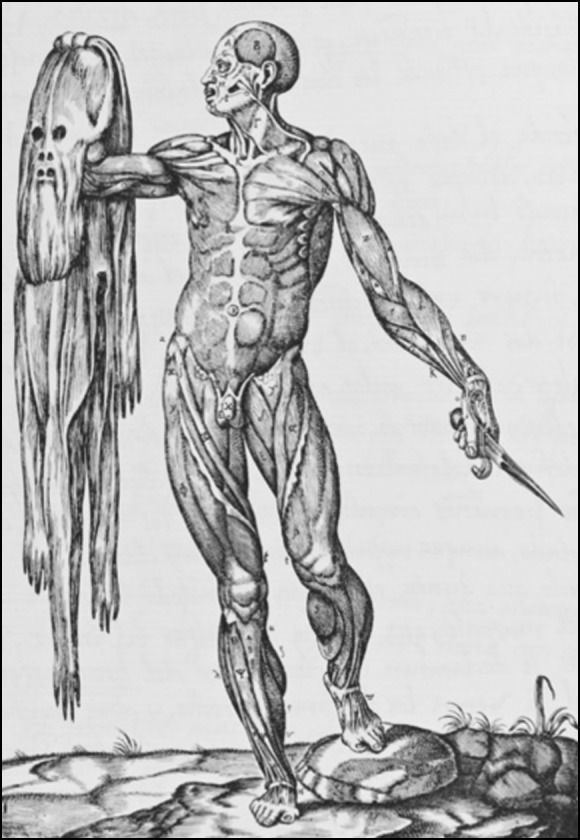
Illustration, from De humani corporis fabrica, of a “flayed” which shows external muscles.
Others eminent anatomists of Padua Renaissance Medical School were Realdo Colombo (1516–1559), Gabriele Falloppia (1523–1562), Girolamo Fabrici d'Acquapendente (1533–1619), Giulio Cesare Casserio (1522–1616), and Johannes Wesling (1598–1649). Realdo Colombo, scholar of Vesalius, was the first to describe the pulmonary circulation in the western world. 8 In the context of pulmonary circulation discovery, it is important to mention AbulHassan Alaa Eldin ElKarshy, best known as Ibn Nafis (1213–1288), a Syrian-born physician who spent most of his life in Cairo, Egypt. In the work Commentary on the Anatomy of the Canon of Avicenna, Ibn Nafis clearly described the pulmonary circulation and refuted Galen's theory on the existence of pores in the interventricular septum allowing blood to pass from right to left ventricle. This manuscript was only rediscovered in the first half of the 20th century. 9 Therefore, it is unknown whether Colombo, and later Harvey, had studied the works of Ibn Nafis or not. Falloppia described the falloppian tubes and had many other important contributions in anatomy. Fabrici d'Acquapendente, a pioneer in embryology and comparative anatomy, was considered the father of embryology as well as a renowned surgeon. Most importantly, d'Acquapendente designed the first stable anatomical theatre of the world, which was inaugurated in 1595 and still exists at the Bo Palace of the University of Padua (Fig. 8). Casserio and Wesling were the first to describe what is known today as the Circle of Willis 10 (Fig. 9). Casserio, who was Fabrici's scholar and opponent, also gave original descriptions of the eye and other sense organs.
Figure 8. .
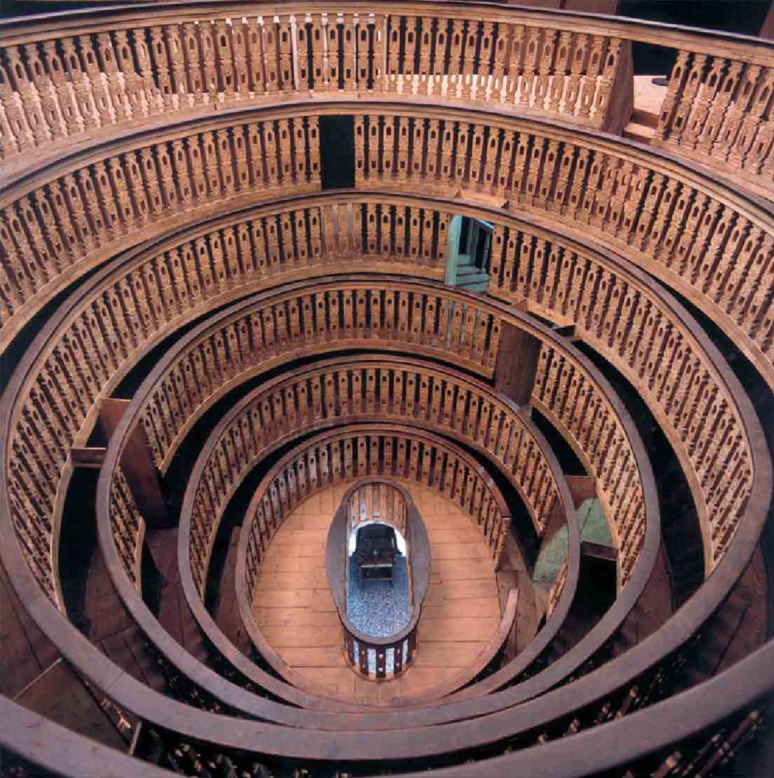
Padua anatomical theatre, inaugurated in 1595, perfectly preserved in the Bo Palace of Padua University.
Figure 9. .
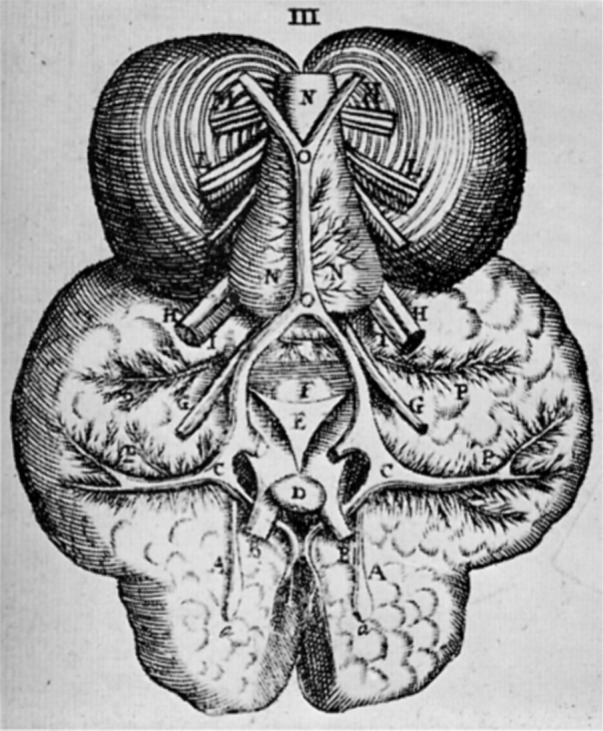
Image of the arterial cerebral circle from Wesling's Syntagma anatomicum (1647).
The Padua Renaissance anatomical school was the most prominent in Europe. It reflected a period in which the first basic problem of medicine started to be solved. This basic problem was the analysis of the structure of human body and its internal organization, the so-called “microcosm”. The school of anatomy in Padua provided new concepts that raised critical questions to the plausibility of the traditional humoral theory, which influenced both the theory and practice of medicine since the times of Hippocrates. It postulated that the factors responsible of function and dysfunction of human body are not referred to anatomical structures, but rather to the fundamental fluids, thought to compound human organs and organism, i.e., the four humours: blood, black bile, yellow bile, and phlegm.
Advances in physiology
The next step, both historically and epistemologically, was the development of physiology. The discovery of blood circulation by William Harvey (1578–1657) marked the beginning of human physiology in the modern sense. Before this discovery, human physiology was based on Galen theory, which postulated that arteries and veins were two systems almost completely separated. He thought that that venous blood was generated in the liver, from where it was distributed and consumed by all organs of the body, and that a ‘spirit’ circulated in arteries and was mixed with blood passing trough hypothetic pores in interventricular septum. While being a scholar of Fabrici d'Acquapendente in Padua, Harvey first conceived the idea of blood circulation that was later published in his famous 1628's book, De motu cordis. 11 Harvey proved that the amount of blood coming out each day from the left ventricle could only be explained with a movement in a close circuit. Harvey supported his discovery with the correct interpretation of veins valves described by Fabrici 12 (Fig. 10) and with the application of Aristotelian concepts on the perfection of circular movement, which he studied in Padua. In fact, Harvey quoted Fabrici and Aristotle in 1628, declaring that they were the principal source of inspiration for him. 11 It is noteworthy that Harvey used the mathematical and quantitative approach in his studies. This methodology was also well established in Padua, thanks to the teachings of Galileo Galilei (1564–1642), who was professor of mathematics in the time of Harvey stay in Padua (1592–1610).
Figure 10. .
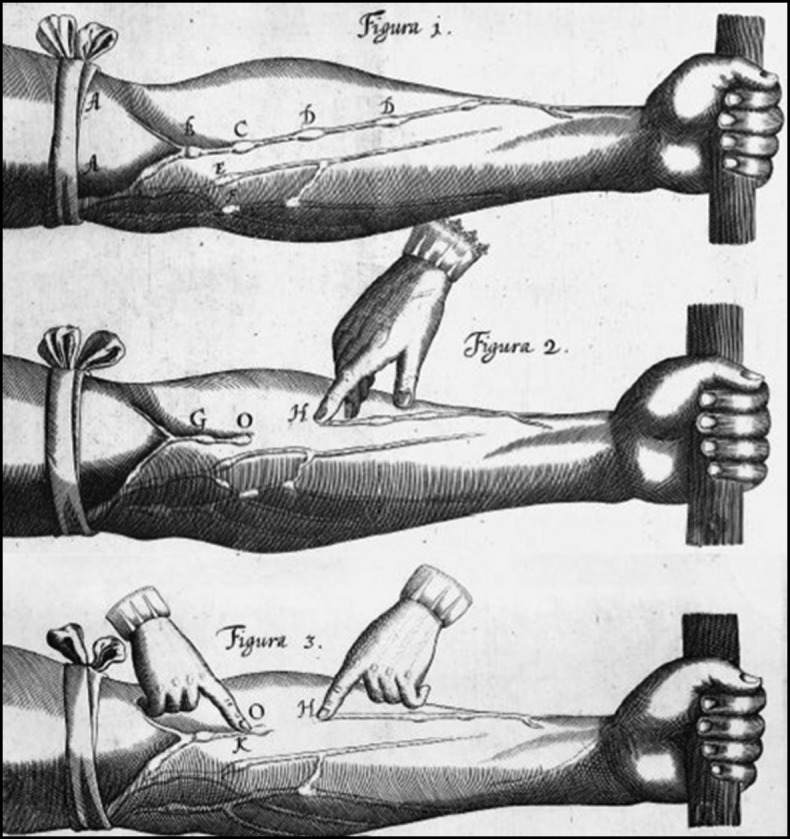
Engraving published by Harvey in his De motu cordis (1628) that reproduced the same image (with different intensions) used by Fabrici in his De venarum ostiolis (1603).
The quantitative approach, following the Galilean example, had also been systematically developed in medicine by Santorio Santorio (1561–1636). Santorio, a professor of theoretical medicine in Padua, invented several instruments to measure physiological parameters, such as temperature and pulse frequency 13 (Fig. 11). He was one of the pioneers of iatromechanism.
Figure 11. .
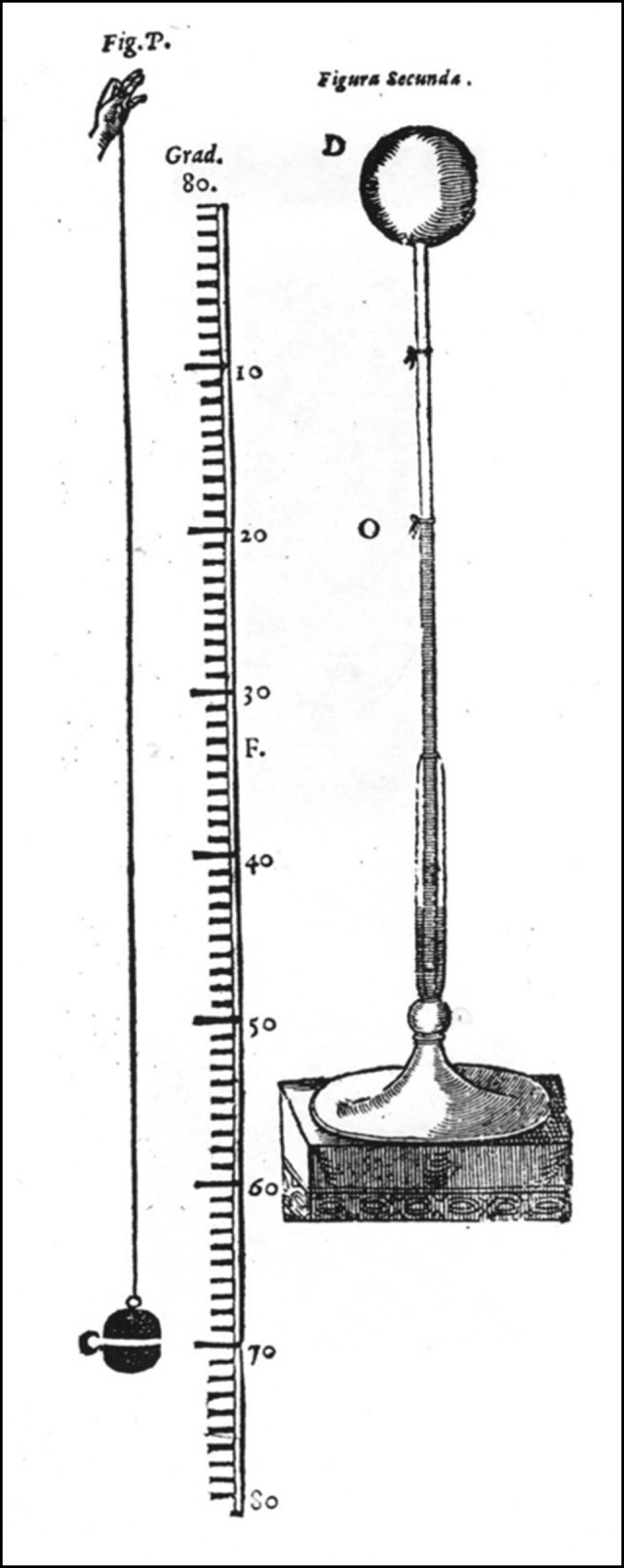
The instrument invented by Santorio (on the left) to measure pulse frequency, called the “Pulsilogio”.
The 17th century developments of physiology corresponded to a new range of questions in medicine. These questions were consequent to the advances of anatomy and were related to the attempt of interpreting the functions of the discovered anatomical structures. For example, the discovery of the pancreatic duct by Georg Wirsung (1589–1643) in Padua was the subject of an intense discussion about its physiological function. 14
Advances in pathology
Padua witnessed a further fundamental advancements in medicine in the 18th century. It was the shift from merely studying the normal anatomy and physiology to analysing the natural history of disease and understanding sick structures and functions. Giovanni Battista Morgagni (1682–1771) (Fig. 12), Professor of Anatomy in Padua Medical School, introduced the anatomo-clinical method, which still represents an up-to-date scientific approach of combining basic research and clinical practice. 15 Celebrated as the father of physiopathology, Morgagni's pathological anatomy was deeply clinically and physiologically oriented. The principles of Morgagni were based on the idea that altered functions cause deformations in organs. 16 Morgagni learned from his ‘spiritual master’ Marcello Malpighi in Bologna (1628–1694) to apply the mechanistic theory of the human body or iatromechanism. 17 This theory was based on the view of blood as a collection of particles and the body as a set of mechanical tubes, engines and implements. Iatromechanism can be defined as the school of medicine by which all physiological happenings were treated as rigid consequences of the laws of physics. This is in contrast to the humoral theory, which is based on non-materialistic, ‘spiritual’ humors that govern the body. In Padua, Antonio Vallisneri (1661–1730) and Domenico Guglielmini (1655–1710) believed in the philosophy of iatromechanisms. On the other hand, Alessandro Knips Macoppe (1662–1744), Professor of Practical Medicine in Padua, was an opponent of iatromechanism. Macoppe believed that it was useless to study and cure diseases in this mechanical sense and that it was enough to empirically observe natural history of diseases and the effects of therapies. Of note, Macoppe wrote a manual of “medical etiquette” that was widely diffused at his time and represented one of the first modern manuscripts about the topic. 18
Figure 12. .
Frontispiece, with portraits, of De sedibus et causis morborum per anatomen indagatis, masterpiece by Morgagni, a fundamental part of anatomo-clinical method.
Other fields of medicine
Besides anatomy, physiology and pathology, the Padua Medical School had contributed in many other fields of medicine. Alessandro Benedetti (1450–1495), a Padua anatomist, described the spread of syphilis (or the Gallic disease) in Italy with the descent of Charles VIII of France in 1494–1495. 19 Girolamo Fracastoro (1476/8–1553) attributed the plague epidemics of Venice to seminaria, a sort of living-like particles that would be identified as viruses and bacteria three centuries later 20 (Fig. 13). Fracastoro conceived seminaria as material particles able to transmit the infection in methods different to living entities. However, seminaria had some similar properties to modern conceptions, because they were believed to multiply inside the host or remain latent for a given period outside. Those epidemics, when studied from a medical history point of view, represented great intellectual advances.
Figure 13. .
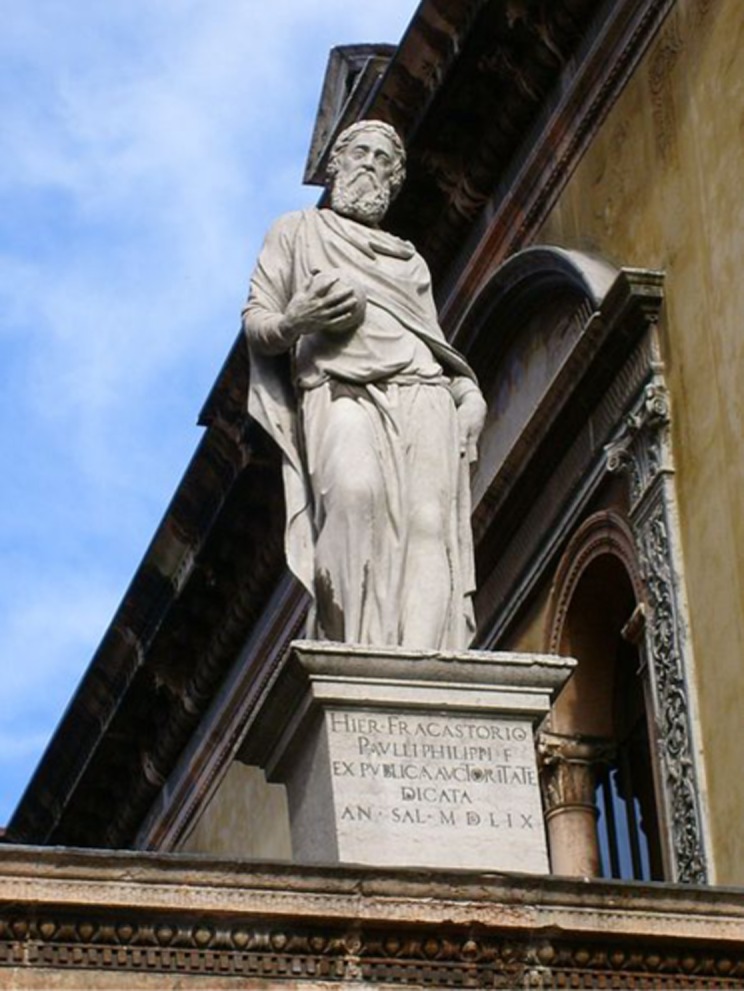
Statue of Girolamo Fracastoro in Verona, his hometown.
Bernardino Ramazzini, professor of theoretical medicine, (1633–1714) (Fig. 14) founded occupational medicine with his book “De morbis Artificum diatriba”. 21 The development of occupational medicine can be recognized as a further step towards the concept that diseases occur due to specific causes and in concrete contexts.
Figure 14. .

Engraving of Bernardino Ramazzini.
The last two centuries
A very important advancement between the 19th and 20th centuries, was the development of constitutional medicine by Achille de Giovanni (1838–1916), a Paduan clinician, Dean of the Faculty of Medicine and Magnificent Rector (Fig. 15). Constitutional medicine was the basis for the study of the hereditary nature of diseases and also for the development of endocrinology. 22 The progress of microbiology from the late 14th century, emphasized external causes, the ‘seeds’ of the diseases. The constitutional medicine balanced this concept by a new analysis of the internal causes of the disease, the individual ‘ground’ that could help or hinder disease development.
Figure 15. .
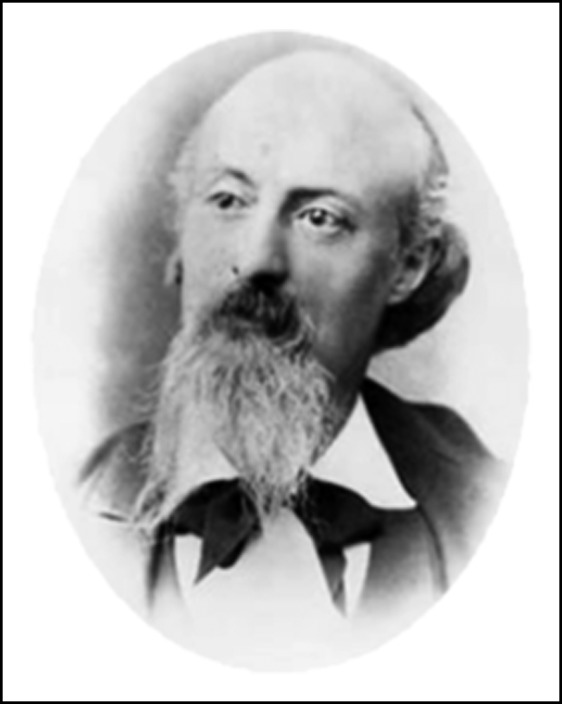
Achille De Giovanni.
Therefore, the individual ‘constitution’ became an important subject. It was designed as a set of morphological, functional and psychological characteristics of the patient, as well as the hereditary history (that is currently explained by the genetic heritage). The different constitutional types were examined at the beginning in particular with anthropometric instruments that were able to detect the proportions between the different parts of the body. Also, the harmonies and disharmonies of the development were understood; with the latter considered as possible sources of morbidity. De Giovanni designed and used an anthropometric table (Fig. 16), which allowed him to perform a large amount of measurements and to establish the existence of three fundamental morphological types, each characterized by specific morpho-functional combinations and pathological predispositions. Constitutional medicine reserved a special attention to endocrinology, which considers hormones as essential ingredients in the individual and psychological development. In fact, the founder of modern endocrinology, Nicola Pende (1880–1970), was a student of De Giovanni.
Figure 16. .
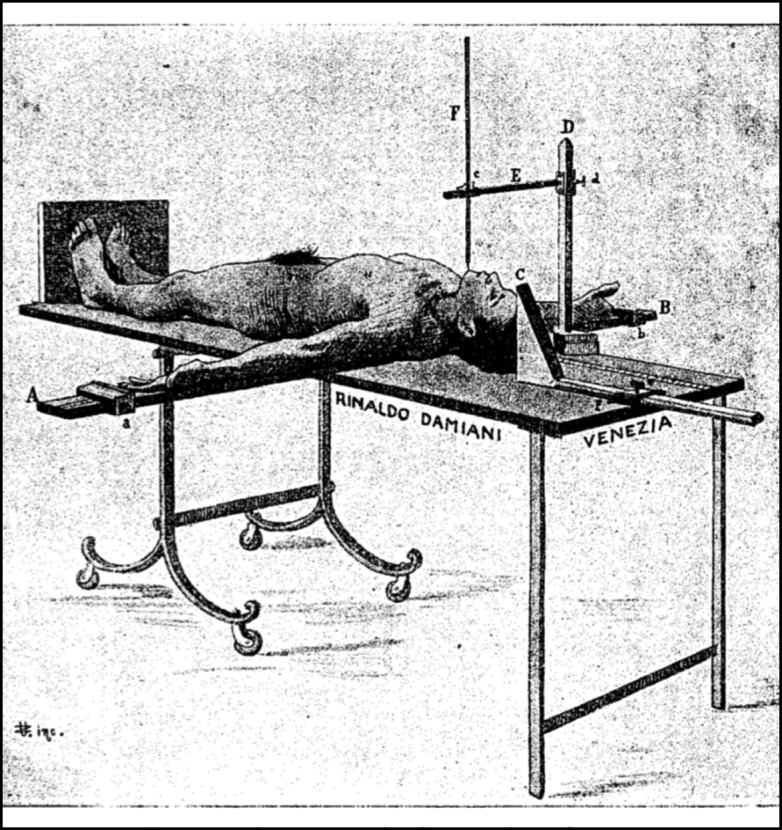
Anthropometric table ideated by Achille De Giovanni.
In the last century, with the introduction of anesthesiology and surgery, Padua remained in the vanguard. Thanks to the late prominent cardiothoracic surgeon, Vincenzo Gallucci (1935–1991), the first heart transplantation in Italy took place in Padua 23 (Fig. 17). Padua has also been a pioneer in other organ transplantation programs, such as for kidney and liver. Bassini, Cevese, Belloni, Aloisi, Siliprandi, and Rizzi were the main protagonists of this recent history and deserve to be mentioned. Today, Padua is keeping up with new discoveries in both clinical and basic sciences (genetics, transgenic mice, molecular biology), novel therapies and up-to-date imaging technologies (total body scan, magnetic resonance, computer tomography angiography, positron emission tomography).
Figure 17. .
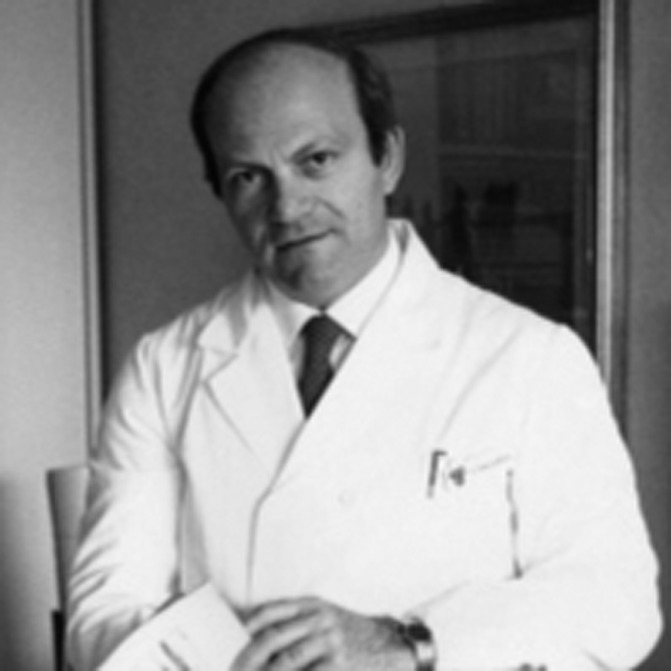
Vincenzo Gallucci (1935–1991) prominent cardio-thoracic surgeon of the University of Padua. He performed the first heart transplantation in Italy in 1985.
Conclusion
History is not just analysis and memory of the past. It must always be viewed as a research that shows that the past constantly reverberates in the present and projects itself into the future. Therefore, we believe that the Padua's history of medical advances can also be projected in the future. All through its history, Padua adhered to the principles of intellectual liberty, proper scientific methodology and universal tolerance. Today, when medicine has become a global scientific phenomenon, these principles remain the solid foundation for further scientific achievements and prosperity of humankind.
References
- [1].Rossetti L. The University of Padua. An Outline of Its History. Trieste: Edizioni Lint; 1983. [Google Scholar]
- [2].Zampieri F, Thiene G. Il Leone di S. Marco fra mito e storia, “Cuore & Salute”, 7-8-9, pp. 1–5.
- [3].Ongaro G. La medicina nello Studio di Padova e nel Veneto. In: Arnaldi G, Pastore Stocchi M, editors. Storia della cultura Veneta. Dal primo Quattrocento al Concilio di Trento. vol. 3/III. Vicenza: Neri Pozza Editore; 1981. pp. 75–134. [Google Scholar]
- [4]. Ongaro G. La medicina Negro D, ed. L'Università di Padova. Otto secoli di storia Padova: Sigmumpadova; 2001. 153 193 [Google Scholar]
- [5]. Zampieri F. Emilio Campolongo, filosofo e medico patavino (1550–1604) Zampieri G, ed. La chiesa dei Servi in Padova Roma: L'Erma di Bretschneider; 2012. 281 307 [Google Scholar]
- [6]. Vesalio, A. (1538), Tabulae anatomicae sex, imprimebat B. Vitalis Venetus: sumptibus Ioannis Stephani Calcarensis: prostrant vero in officina D. Bernardi, Venetiis.
- [7].Vesalio A. De humani corporis fabrica libri septem. Basileae: per Ioannem Oporinum; 1543. [Google Scholar]
- [8].Colombo R. De re anatomica. Venetiis: ex typographia Nicolai Beuilacquæ; 1559. [Google Scholar]
- [9].Haddad S, Khairallah A. A forgotten chapter in the history of the circulation of the blood. Ann Surg. 1936 July;104(1):1–8. doi: 10.1097/00000658-193607000-00001. [DOI] [PMC free article] [PubMed] [Google Scholar]
- [10].Wesling J. Syntagma anatomicum. Patavii: Typis Pauli Frambotti bibliopolae; 1647. [Google Scholar]
- [11].Harvey W. Exercitatio anatomica de motu cordis et sanguinis in animalibus […] Francofurti: Sumptibus Guilielmi Fitzeri; 1628. [Google Scholar]
- [12].Fabrici D'Acquapendente G. De venarum ostiolis. Patavii: ex typographia Laurentij Pasquati; 1603. [Google Scholar]
- [13].Santorio S. Ars de statica medicina. Lugduni Batavorum: Apud Cornelium Boutesyteyn; 1612. [Google Scholar]
- [14].Ongaro G. Wirsung a Padova 1629–1643. Treviso: Antilia; 2010. [Google Scholar]
- [15]. Thiene G. Le celebrazioni morgagnane dell'Anno Accademico 2011–2012 Zampieri G, ed. La Chiesa di San Massimo in Padova Cappella Universitaria. Archeologia Storia Arte intorno alla Chiesa di San Massimo. Risultati della ricognizione scientifica della tomba di Giovan Battista Morgagni e altri interventi Roma: L'Erma di Bretschneider; 2012. 220 261 [Google Scholar]
- [16].Morgagni GB. De sedibus et causis morborum per anatomen indagatis libri quinque. Venetiis: ex typographia Remondiniana; 1761. [Google Scholar]
- [17]. Zampieri F, Thiene G. Il metodo morgagnano ieri e oggi: dalla patologia d'organo alla patologia molecolare Zampieri G, ed. La Chiesa di San Massimo in Padova Cappella Universitaria. Archeologia Storia Arte intorno alla Chiesa di San Massimo. Risultati della ricognizione scientifica della tomba di Giovan Battista Morgagni e altri interventi Roma: L'Erma di Bretschneider; 2012. 205 221 [Google Scholar]
- [18].Knips Macoppe A. Aphorismi medico-politici. Venetiis: 1795. [Google Scholar]
- [19].Benedetti A. Diaria de bello Carolino. Venetiis: 1496. [Google Scholar]
- [20].Fracastoro G. Syphilis, sive morbus Gallicus. Romae: apud Antonium Bladum Asulanum; 1531. [Google Scholar]
- [21].Ramazzini B. De morbis artificum diatriba. Mutinae: typis Antonii Capponi, impressoris episcopalis; 1700. [Google Scholar]
- [22].De Giovanni A. La morfologia del corpo umano. Milano: U. Hoepli; 1891. [Google Scholar]
- [23].Thiene G. Padua University: the role it has played in the history of medicine and cardiology and its position today. Euro Heart J. 2009;30:629–635. doi: 10.1093/eurheartj/ehp082. [DOI] [PubMed] [Google Scholar]



